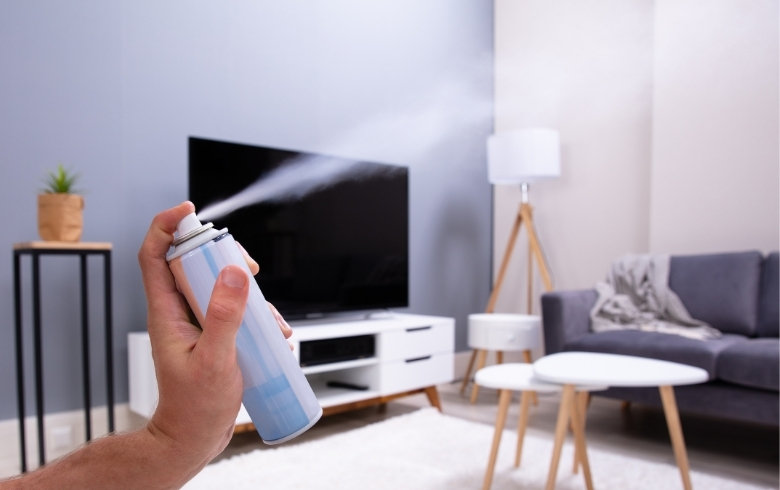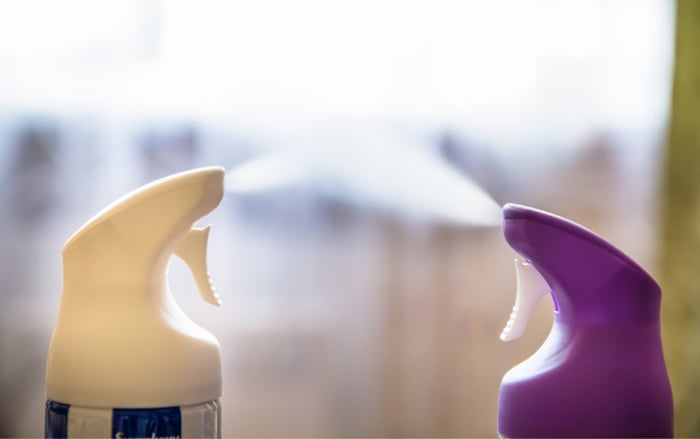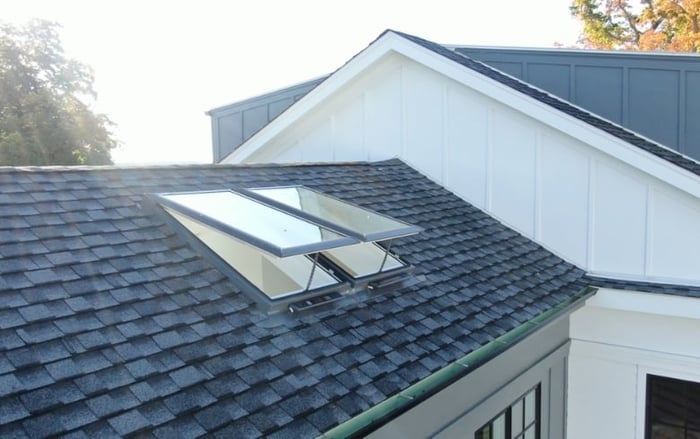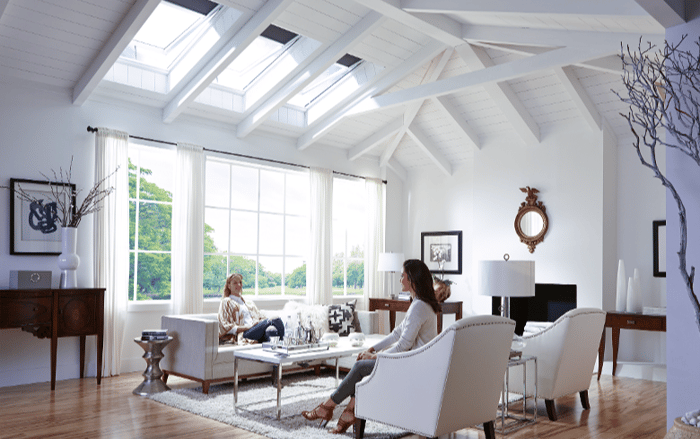
It's easy to tell when you need to vacuum or dust around the house, but how do you know if your home's air is clean? The scary thing is, you probably can't tell from just a glance around the room.
Indoor air can be hazardous to your and your family's health without any telltale signs. And, believe it or not, indoor air can often be more polluted than the air outside.
But what makes it so polluted? And how can you protect your family's health from the air their breathing? Let's get into it!
What Makes Indoor Air Unhealthy?
There are many contributing factors to indoor air pollution. And when the air in your home becomes too polluted, it becomes unhealthy. So unhealthy, in fact, that poor indoor air quality can cause or worsen infections, lung cancer, and chronic lung diseases like asthma. But just what is it that's polluting your air? Any number of these:
- Asbestos, naturally-occurring fibrous minerals that were once widely used in building supplies and other consumer products. Research has linked asbestos fibers to major breathing problems and cancer.
- Airborne bacteria and viruses. Poor air circulation and crowded or damp conditions allow some bacteria and viruses to thrive and circulate.
- Carbon monoxide, an odorless, colorless, tasteless gas that reduces the blood's ability to carry oxygen. It can reach dangerous levels indoors and out and is produced when fuels - gasoline, natural gas, oil, kerosene, wood, or charcoal - are burned.
- Carpets. They trap pollutants like dust mites, pet dander, cockroach allergens, lead, mold spores, pesticides, dirt, and dust; so there's another point for hardwood floors.
- Cleaning supplies and household chemicals. They're essential, but can also release harmful chemicals into the air, including volatile organic compounds (VOCs). Check the labels before you buy, and opt for ones that don't contain or have reduced amounts of VOCs, fragrances, irritants, and flammable ingredients to help keep your hair healthier.
- Dust mites are the most common cause of indoor air pollution. Nearly unavoidable, you can take action against dust mites by reducing humidity and soft surfaces, replacing carpets, and damp mopping your floors often.
- Lead, the toxic metal that was once a staple in manufacturing common household products and gasoline. The most common source of lead air pollution indoors is old paint in homes built before 1978. If you suspect there is lead-based paint in your home, consult a professional before removing it or renovating the area.
- Mold and dampness, completely unavoidable pollutants. There are no indoor spaces without mold, but without moisture, mold cannot grow. Leaks or high humidity contribute to dampness in a home, so keep that in check to keep the mold in check.
- Pet dander. Unfortunately, our furry friends' microscopic dander can cause reactions in people who are allergic to these triggers. If you keep a pet and are allergic, mediate the effects of the dander by keeping your pet out of the bedroom, off the furniture, and away from carpets. Clean regularly and do not allow dust to accumulate.
- Secondhand smoke, a serious health hazard that causes more than 41,000 deaths each year. There is no risk-free level of exposure to secondhand smoke. Prevent it in your home by not allowing smoking anywhere inside.
How Can You Tell if Your Indoor Air is Unhealthy?
If you're worried about the pollution levels in your home, there are steps you can take to mediate your indoor air quality. The first step is identifying what's causing the indoor air pollution. Take a walk through your home and see if anything from these questions sticks out. Once you identify the potential problem, follow the link to the American Lung Association's website for information on what to do to protect your home.
- Is anyone smoking indoors?
- Can you see or smell mold or mildew?
- Is your home's humidity regularly above 50%?
- Are there any leaks or standing water? Double-check the kitchen, basement, and attic.
- Are all fuel-burning appliances (gas stoves, water heaters, fireplaces) fully vented to the outdoors and regularly serviced?
- Do you have an attached garage where you keep cars, lawnmowers, or motorcycles?
- Do you keep household chemicals, paints, or solvents stored indoors or in an attached garage/basement?
- Have you recently painted, remodeled, or added new furniture or carpeting?
- Do you use air-fresheners or any other odor-masking chemicals?
- Have you recently used pesticides?
- Have you had your home tested for radon?
Tips for Keeping Pollution Out
The first step to keeping the air in your home healthy is doing what you can to keep pollution out. Ventilation also plays an important part in indoor air quality, but we'll get to that in a bit. First, here are a few helpful tips for keeping pollution out:
- Declare your home a smoke-free zone, and never let anyone smoke inside.
- Perform routine radon tests. Radon is an invisible gas that can cause lung cancer, and every home should be tested for it. Don't worry: if it's present in your home, it can be fixed.
- Keep humidity levels under 50%. Use a dehumidifier or air conditioner as needed, and be sure to keep those clean so they don't become a source of pollution too.
- Fix all leaks and drips in your home to discourage mold or mildew.
- Put away food when you're done with it, keep trash covered, and use baits to control pests that may bring in dust mites or other allergens.
- Avoid burning wood; it adds soot to the air in your home and your neighborhood. If you can't give up a wood-burning fireplace though, make sure it's well-ventilated and smoke has a clear path outside.
- Avoid using scented candles or fragrances to hide odors. The odor could be another pollutant, and you want to address that at the source rather than covering up the side effects.
- Use cleaning, household, and hobby products that are less toxic, and do not store hazardous chemicals in your home.
How Skylights Can Help
Once you clear the air in your home of pollution and pollution sources, keeping your air clean is all a matter of ventilation. You can think of ventilation as your home's lungs: it brings in the fresh air needed to help flush out the stale air that's built up high levels of moisture, odors, gases, dust, and other pollutants. To create good air quality, enough fresh air needs to be brought in and circulated so that it reaches all areas of the home.
That's where skylights come in.
For almost all homes, vertical windows contribute to bringing in fresh air. Skylights help give them a fresh air boost. When you open skylights at the same time as vertical windows, a phenomenon called the Stack Effect or Chimney Effect happens. Warmer, stale air that has accumulates near your ceilings is whisked out through the skylights as cooler, fresh air comes in through the windows. This creates a consistent breeze that offers full-home ventilation.
VELUX now even has a nifty little device to remind you to open your skylights and ventilate your home. VELUX ACTIVE with NETATMO connects skylights to your smartphone and Wi-Fi connection. It uses Wi-Fi to track local weather trends and compare the air quality outside with your air quality indoors. Through your phone, you can adjust your settings to have your skylights automatically open when humidity, temperature, or CO2 levels are too high, then close when they reach ideal levels. You can control your skylights and blinds from the app manually as well.
Want to talk to someone about how skylights can help the air quality in your home? Schedule a virtual consultation to talk to one of our skylight experts. And don't forget to subscribe here to stay informed on all daylight and fresh air-related topics!
VELUX Skylight Systems
Reimagine Your Home With Natural Light and Fresh Air

HEALTHY LIVING
10 Household Objects Polluting Your Home's Air
Levels of air pollution indoors can exceed those outside. Keep the air in your home in check by avoi...
Keep Reading
SKYLIGHT INNOVATIONS
VELUX is the Home of Energy-Efficient Skylights
At VELUX, we're doing our part to make the world a better place with daylight and fresh air.
Keep Reading
HOME TOURS
Incorporating Fresh Air Throughout Your Home
Incorporating fresh air throughout your home is a great way to access these health benefits all year...
Keep Reading